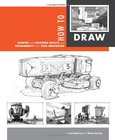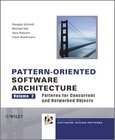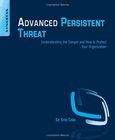Serialization and Persistent Objects
Turning Data Structures into Efficient Databases

Book Details:
| Publisher: | Springer |
| Series: | Springer |
| Author: | Petr Machcek |
| Edition: | 1 |
| ISBN-10: | 3642393225 |
| ISBN-13: | 9783642393228 |
| Pages: | 263 |
| Published: | Apr 24 2014 |
| Posted: | May 30 2015 |
| Language: | English |
| Book format: | |
| Book size: | 22.89 MB |
Book Description:
Recently, the pressure for fast processing and efficient storage of large data with complexrelations increased beyond the capability of traditional databases. Typical examples include iPhone applications, computer aided design both electrical and mechanical, biochemistry applications, and incremental compilers. Serialization, which is sometimes used in such situations is notoriously tedious and error prone.In this book, Jiri Soukup and Petr Machek show in detail how to write programs which store their internal data automatically and transparently to disk. Together with special data structure libraries which treat relations among objects as first-class entities, and with a UML class-diagram generator, the core application code is much simplified. The benchmark chapter shows a typical example where persistent data is faster by the order of magnitude than with a traditional database, in both traversing and accessing the data.The authors explore and exploit advanced features of object-oriented languages in a depth hardly seen in print before. Yet, you as a reader need only a basic knowledge of C++, Java, C#, or Objective C. These languages are quite similar with respect to persistency, and the authors explain their differences where necessary.The book targets professional programmers working on any industry applications, it teaches you how to design your own persistent data or how to use the existing packages efficiently. Researchers in areas like language design, compiler construction, performance evaluation, and no-SQL applications will find a wealth of novel ideas and valuable implementation tips. Under http://www.codefarms.com/bk, you will find a blog and other information, including a downloadable zip file with the sources of all the listings that are longer than just a few lines ready to compile and run.
Download Link:
Related Books:
How to Draw
Drawing and sketching objects and environments from your imagination
How to Draw is for artists, architects and designers. It is useful to the novice, the student and the professional. You will learn how to draw any object or environment from your imagination, starting with the most basic perspective drawing skills. Early chapters explain how to draw accurate perspective grids and ellipses that in later chapters provide the foundation for more complex forms. The research and design processes used to generate visual concepts are demonstrated, making it much easier for you to draw things never-before-seen! Best of all, more than 25 pages can be scanned via a smartphone or tablet using the new Design Studio Press app, which link to video tutorials for that section of the book! With a combined 26 years of teaching expe...
Pattern-Oriented Software Architecture
Volume 2, Patterns for Concurrent and Networked Objects
Designing application and middleware software to run in concurrent and networked environments is a significant challenge to software developers. The patterns catalogued in this second volume of Pattern-Oriented Software Architectures (POSA) form the basis of a pattern language that addresses issues associated with concurrency and networking.The book presents 17 interrelated patterns ranging from idioms through architectural designs. They cover core elements of building concurrent and network systems: service access and configuration, event handling, synchronization,and concurrency. All patterns present extensive examples and known uses in multiple programming languages, including C++, C, and Java.The book can be used to tackle specific software devel...
Advanced Persistent Threat
Understanding the Danger and How to Protect Your Organization
The newest threat to security has been categorized as the Advanced Persistent Threat or APT. The APT bypasses most of an organization's current security devices, and is typically carried out by an organized group, such as a foreign nation state or rogue group with both the capability and the intent to persistently and effectively target a specific entity and wreak havoc. Most organizations do not understand how to deal with it and what is needed to protect their network from compromise. In Advanced Persistent Threat: Understanding the Danger and How to Protect your Organization Eric Cole discusses the critical information that readers need to know about APT and how to avoid being a victim. Advanced Persistent Threat is the first comprehensive manual...
2007 - 2021 © eBooks-IT.org



